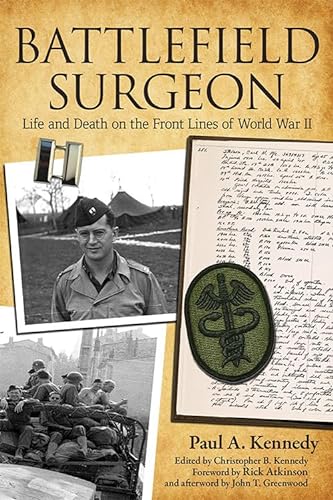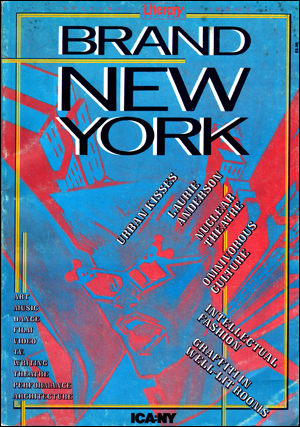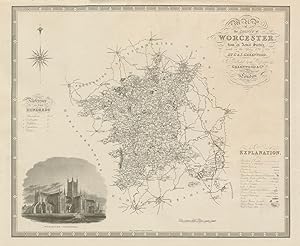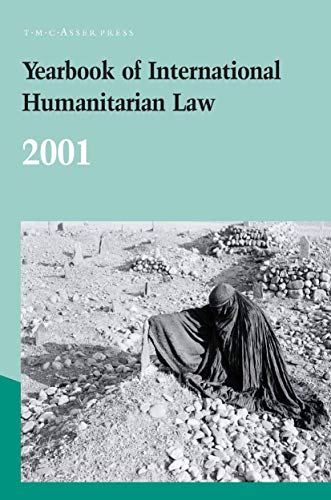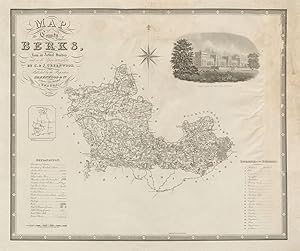Greenwood Christopher John (38 results)
FeedbackSearch filters
Product Type
- All Product Types
- Books (28)
- Magazines & Periodicals (No further results match this refinement)
- Comics (No further results match this refinement)
- Sheet Music (No further results match this refinement)
- Art, Prints & Posters (No further results match this refinement)
- Photographs (No further results match this refinement)
- Maps (10)
- Manuscripts & Paper Collectibles (No further results match this refinement)
Condition
Binding
Collectible Attributes
- First Edition (7)
- Signed (No further results match this refinement)
- Dust Jacket (1)
- Seller-Supplied Images (21)
- Not Print on Demand (34)
Free Shipping
Seller Rating
-
The Corona Book of Ghost Stories: The best in new short stories of the paranormal
Published by Corona Books UK, 2019
ISBN 10: 1999657950 ISBN 13: 9781999657956
Seller: Brit Books, Milton Keynes, United Kingdom
Paperback. Condition: Used; Very Good. ***Simply Brit*** Welcome to our online used book store, where affordability meets great quality. Dive into a world of captivating reads without breaking the bank. We take pride in offering a wide selection of used books, from classics to hidden gems, ensuring there is something for every literary palate. All orders are shipped within 24 hours and our lightning fast-delivery within 48 hours coupled with our prompt customer service ensures a smooth journey from ordering to delivery. Discover the joy of reading with us, your trusted source for affordable books that do not compromise on quality.
-
Tributes to Robin Tanner, 1904-1988
Published by The Robin Tanner Library Appeal, Holburne Museum & Crafts Study Centre, 1990
ISBN 10: 0861971078 ISBN 13: 9780861971077
Seller: Your Book Soon, Stroud, GLOS, United Kingdom
First Edition
Paperback. Condition: Very Good. 1st Edition. staples a little rusted, a few marks to covers - POSTED FIRST CLASS/AIR MAIL FROM UK WITHIN 48 HOURS AIR MAIL WILL BE REDUCED.
More buying choices from other sellers on AbeBooks
Used offers from US$ 35.12
Also find Softcover First Edition
-
Somersetshire Delineated: A Topographical Description of the Country of Somerset
Published by Alan Sutton Publishing Limited, Gloucester, 1980
ISBN 10: 0904387534 ISBN 13: 9780904387537
Seller: THOMAS RARE BOOKS, Yaxley, SUFFOLK, United Kingdom
Hardback. Condition: Fine. Dust Jacket Condition: Fine. facsimile. 215pp. Blue d.j. Originally pub. 1822 this is a facsimile edition of the original.
-
Somersetshire Delineated
Published by Kessinger Publishing, LLC, 2009
ISBN 10: 1120710715 ISBN 13: 9781120710710
Seller: moluna, Greven, Germany
Condition: New. Dieser Artikel ist ein Print on Demand Artikel und wird nach Ihrer Bestellung fuer Sie gedruckt. KlappentextrnrnThis scarce antiquarian book is a facsimile reprint of the original. Due to its age, it may contain imperfections such as marks, notations, marginalia and flawed pages. Because we believe this work is culturally important, we have.
-
Battlefield Surgeon: Life and Death on the Front Lines of World War II
Published by Univ Pr of Kentucky, 2016
ISBN 10: 081316723X ISBN 13: 9780813167237
Seller: Revaluation Books, Exeter, United Kingdom
Hardcover. Condition: Brand New. 1st edition. 269 pages. 9.50x6.50x1.00 inches. In Stock.
-
Map of the County of Bedford
Published by Greenwood & Co, London, 1834
Seller: Clive A. Burden Ltd., Chalfont St. Giles, BUCKS, United Kingdom
Map
No binding. 570 x 770 mm., early wash colour with light paper fold and lower centrefold split repaired, otherwise in good condition. Following the extensive work carried out by the Greenwood's on the series of large scale county surveys a reduced sized atlas was planned. It began as early as 1829, the date recorded on 11 of the plates. It was advertised in 1828 to appear in four parts at three guineas per part. There were to be 46 plates all at one-third of an inch to a mile. Running into financial difficulties towards the end they had to take in partners to finally finish in 1834. 'For detail, general accuracy and balance allied to high quality engraving and colouring these sheets are probably the finest ever single sheet maps of the counties' (Carroll). This map of Bedfordshire is in the first state and contains a fine vignette view of Woburn House. Tooley's 'Dictionary of Mapmakers', Chambers no. 88.i; Chubb 458B.
-
MAP OF THE COUNTY OF OXFORD From an Actual Survey Made in the Years 1822 &1823
Published by Greenwood , 13 Regent Street, Pall Mall, London, 1829
Seller: THOMAS RARE BOOKS, Yaxley, SUFFOLK, United Kingdom
First Edition
No Binding. Condition: Incomplete original Map. 1st Edition. A large folding double page map UNFOLDED EXAMPLE with cropped and damaged margin including the dec. border. Decorative double page engraved map of the county with an uncoloured vignette view of engraved by R. Creighton. Fine elegant title to the top left. Original hand-colour block and outline. 65 x 80.5 cms [25 1/2 x 31 3/4 inches] printed on thick paper with wide clean and fine margins. "Atlas of The Counties of England" [dated 1834]. PLEASE EMAIL FOR PHOTOS. WE have many more Greenwoods from this atlas in stock all individually priced. Please email for details.
-
The Literary Review : Brand New York
Published by Namara Press / Institute of Contemporary Art (ICA) London / London, United Kingdom / United Kingdom, 1982
ISBN 10: 0704334267 ISBN 13: 9780704334267
Seller: Specific Object / David Platzker, New York, NY, U.S.A.
129 pp.; 29.5 x 20.7 cm.; glue bound; black-and-white; edition size unknwon; unsigned and unnumbered; offset-printed; a"Special Issue : Brand New York," of The Literary Review published in 1982 and edited by Gillian Greenwood. Contents include: "Editorial," by Lisa Appignanesi; "Between Two New Yorks," by Melvyn Bragg; "Manhattan Letter," by Elizabeth Hardwick; "New York Art: Seven Types of Ambiguity," by Hal Foster; "Urban Kisses," by John Ahearn, Mike Glier, Ken Goodman, Keith Haring, Robert Longo, Judy Rifka, Cindy Sherman; "On Being Scene: New York Fashions Its Steyle," by Michael Sorkin; "Philip Johnson's Post-Modernist Venture;" "Reflecting on Post-Modernism," an interview with Rosalind Krauss; "New York: Heroic City," by Rosetta Brooks; "A Hunger for Imagery," an interview with Brooke Alexander; "Graffiti in Well-Lit Rooms," by Suzi Gablik, includes artists statements and brief introductions to artists including Keith Haring, Jean Michel Basquiat, Wasp, Tim Rollins, Futura 2000, and Fab 5 Fred; "Laurie Anderson: Big Science and Little Men," by Stuart Morgan; "Crossing Over: The Streets, Clubs and Art," by Edit deAk; "New York Performs;" "From Dreamgirls to Satyagraha," an interview with Michael Feingold; "On My Efforts," by Richard Foreman; "Beyond the Theatrical Avant-Garde," by Richard Schechner; "Nuclear Theatre," by Bonnie Marranca; "Serialism, Spontaneity and Sass," by Robert Christgau; "Tailored for Television: The World of New York Video," by Arlene Zeichner; "Mean Streets, Dream Structures: New York Film," by J. Hoberman; "Play it Again, Sam: Watching the American Box," by Brian Winston; "The Humours of New York," by Michael Kustow; "Omnivorous Culture," by Christopher Hitchens; "New York Live;" and "ICA:NY Season Calendar." Cover illustration by Liz Dalton.Special issue, "Brand New Yorkm," of The Literary Review published in 1982 and edited by Gillian Greenwood. Contents include: "Editorial," by Lisa Appignanesi; "Between Two New Yorks," by Melvyn Bragg; "Manhattan Letter," by Elizabeth Hardwick; "New York Art: Seven Types of Ambiguity," by Hal Foster; "Urban Kisses," by John Ahearn, Mike Glier, Ken Goodman, Keith Haring, Robert Longo, Judy Rifka, Cindy Sherman; "On Being Scene: New York Fashions Its Steyle," by Michael Sorkin; "Philip Johnson's Post-Modernist Venture;" "Reflecting on Post-Modernism," an interview with Rosalind Krauss; "New York: Heroic City," by Rosetta Brooks; "A Hunger for Imagery," an interview with Brooke Alexander; "Graffiti in Well-Lit Rooms," by Suzi Gablik, includes artists statements and brief introductions to artists including Keith Haring, Jean Michel Basquiat, Wasp, Tim Rollins, Futura 2000, and Fab 5 Fred; "Laurie Anderson: Big Science and Little Men," by Stuart Morgan; "Crossing Over: The Streets, Clubs and Art," by Edit deAk; "New York Performs;" "From Dreamgirls to Satyagraha," an interview with Michael Feingold; "On My Efforts," by Richard Foreman; "Beyond the Theatrical Avant-Garde," by Richard Schechner; "Nuclear Theatre," by Bonnie Marranca; "Serialism, Spontaneity and Sass," by Robert Christgau; "Tailored for Television: The World of New York Video," by Arlene Zeichner; "Mean Streets, Dream Structures: New York Film," by J. Hoberman; "Play it Again, Sam: Watching the American Box," by Brian Winston; "The Humours of New York," by Michael Kustow; "Omnivorous Culture," by Christopher Hitchens; "New York Live" and "ICA:NY Season Calendar." Cover illustration by Liz Dalton. Good / Very Good. Rubbing of covers with light soiling along top edge of recto, bumping of bottom right corner of publication with 4.2 cm. - 7.4 cm. dog-ear to bottom corner of periodical from recto to verso. Additional light handling wear. Contents clean and unmarked.
-
Map of the county of Worcester from an actual survey made in the years 1820 & 1821
Publication Date: 1830
Seller: Antiqua Print Gallery, London, United Kingdom
Map
Condition: Good. "Map of the county of Worcester" Worcestershire GREENWOOD 75x60cm 1830 old. Large antique engraved county map; Engraved by J. & C. Walker (1830). 62.0 x 75.5cm, 24.25 x 29.75 inches. Condition: Good. Repaired tear in top margin extending into, but not inside, the top border. The map has been strengthened verso along the right hand side. There is nothing printed on the reverse side, which is plain. Vignette of Worcester Cathedral.
-
Yearbook of International Humanitarian Law - 2001 (Yearbook of International Humanitarian Law, 4)
Published by T.M.C. Asser Press, 2011
ISBN 10: 9067041696 ISBN 13: 9789067041690
Seller: Lucky's Textbooks, Dallas, TX, U.S.A.
Condition: New.
More buying choices from other sellers on AbeBooks
New offers from US$ 183.73
Used offers from US$ 282.37
Also find Hardcover
-
Map of the County of Cambridge
Published by Greenwood & Co, London, 1834
Seller: Clive A. Burden Ltd., Chalfont St. Giles, BUCKS, United Kingdom
Map
No binding. 570 x 790 mm., early wash colour, some light offsetting otherwise in good condition. Following the extensive work carried out by the Greenwood's on the series of large scale county surveys a reduced sized atlas was planned. It began as early as 1829, the date recorded on 11 of the plates. It was advertised in 1828 to appear in four parts at three guineas per part. There were to be 46 plates all at one-third of an inch to a mile. Running into financial difficulties towards the end they had to take in partners to finally finish in 1834. 'For detail, general accuracy and balance allied to high quality engraving and colouring these sheets are probably the finest ever single sheet maps of the counties' (Carroll). This map of Cambridgeshire contains a fine vignette view of Ely Cathedral. Tooley's 'Dictionary of Mapmakers', Chubb 458B.
-
Map of the county of Berks from an actual survey made in the years 1822 & 1823
Publication Date: 1829
Seller: Antiqua Print Gallery, London, United Kingdom
Map
Condition: Fair. "Map of the county of Berks". Berkshire. GREENWOOD / DOWER. Large 75x60cm 1829. Large antique engraved county map; Engraved by J. Dower, 6, Cumming Place, Pentonville (1829). 61.5 x 73.5cm, 24 x 29 inches. Condition: Fair: The map has suffered water damage along the right hand side, where it has been strengthened verso. The glue from the repair has moderately changed the tone of the paper. Please contact us if you would like to arrange to view this map. There is nothing printed on the reverse side, which is plain. Includes exclaves. Vignette of east view of Windsor Castle.
-
Map of the County of Suffolk
Published by Greenwood & Co, London, 1834
Seller: Clive A. Burden Ltd., Chalfont St. Giles, BUCKS, United Kingdom
Map
No binding. 590 x 790 mm., fine early wash colour, in good condition. Following the extensive work carried out by the Greenwood's on the series of large scale county surveys a reduced sized atlas was planned. It began as early as 1829, the date recorded on 11 of the plates. It was advertised in 1828 to appear in four parts at three guineas per part. There were to be 46 plates all at one-third of an inch to a mile. Running into financial difficulties towards the end they had to take in partners to finally finish in 1834. 'For detail, general accuracy and balance allied to high quality engraving and colouring these sheets are probably the finest ever single sheet maps of the counties' (Carroll). This map of Suffolk contains a fine vignette view of the Abbey Gare at Bury St. Edmonds. Tooley's 'Dictionary of Mapmakers', Chubb 458B.
-
MAP OF THE COUNTY OF CAMBRIDGE FROM AN ACTUAL SURVEY
Published by Greenwood & Co, London, 1834
Seller: Terra Firma Books, San Diego, CA, U.S.A.
Soft cover. Condition: Very Good. Beautiful large map (22.5x28"/56x71cm). Original hand coloring in out line. Detailed inset engravings of Ely Cathedral. Very Good condition!.
-
Handbook of Neurological Rehabilitation
Published by Taylor & Francis, 2002
ISBN 10: 0863777570 ISBN 13: 9780863777578
Seller: moluna, Greven, Germany
Condition: New. Dieser Artikel ist ein Print on Demand Artikel und wird nach Ihrer Bestellung fuer Sie gedruckt. Richard J. Greenwood, Thomas M. McMillan, Michael P. Barnes, Christopher D. WardChanges in the focus of neurological practice worldwide have led to the need for new standard texts that reflect the current state of this expanding area of clinical expe.
-
MAP OF THE COUNTY OF SURREY From an Actual Survey Made in the Years 1822 &1823
Published by Greenwood , 13 Regent Street, Pall Mall, London, 1829
Seller: THOMAS RARE BOOKS, Yaxley, SUFFOLK, United Kingdom
First Edition
No Binding. Condition: Fine. 1st Edition. A fine large folding double page map with the original centre hinge present. Clean paper with no off-setting, foxing, tanning or marks. Decorative double page engraved map of the county with an uncoloured vignette view of Lambeth Castle & Church engraved by R. Creighton. Fine elegant title to the top left. Original hand-colour block and outline. 65 x 80.5 cms [25 1/2 x 31 3/4 inches] printed on thick paper with wide clean and fine margins. Printed July 4th 1829 and published in the C& J Greenwoods "Atlas of The Counties of England" [dated 1834]. PLEASE EMAIL FOR PHOTOS. WE have many more Greenwoods from this atlas in stock all individually priced. Please email for details.
-
Map of the County of Sussex Made in the Years 1823 ad 1824 by C. & J. Greenwood 1829
Published by Greenwood, Pringle & Co, London, 1829
Seller: Antipodean Books, Maps & Prints, ABAA, Garrison, NY, U.S.A.
Condition: Very good condition. Later printing. Large decorative steel engraved survey map of the British county, with original hand color, dissected and mounted on linen. First published March 24th 1825, this is from the same plate but with additions and corrections. With a large vignette illustration of Chichester Cathedral at lower right corner and a compass rose, it shows county boundaries, the parishes and hundreds, market towns, villages, turnpike roads, churches, chapels, castles and priories, heaths, canals, railways, woods, parks, hills, wind and water mills, and rivers & brooks. Subtitle- Published by the Proprietors, Greenwood & Co. 13, Regent Street Pall Mall, London, Corrected to the Present Period July 4th, 1829. Engraved by H. Frost, Goswell Rd. The Greenwood brothers, Christopher and John, are recognized for their impressive series of high quality steel engraved large scale folding county maps based on their own surveys, made between 1817 and 1830. The Sussex map in 12 panels, backed in linen with green silk edging. 29 x 25 1/2". Folds into green marbled paper covers. Very clean and bright.
-
Map of the County of Warwick, from an Actual Survey, made in the Years 1820 & 1821, By C. & J. Greenwood
Published by By the Proprietors, Greenwood, Pringle & Co. Regent Street, Pall Mall, London, 1182
Seller: Clive A. Burden Ltd., Chalfont St. Giles, BUCKS, United Kingdom
Map
No binding. 1325 x 1040 mm., four sheets dissected and laid on contemporary linen, in full early wash colour, edged in green silk, with marbled endpapers. With full contemporary diced russia slipcase, lightly worn, gilt panelled, gilt ruled spine with gilt title, one or two light marks, otherwise in good condition. This large scale map by Christopher Greenwood (1786-1855) is one of the first issued with his brother. The survey of Warwickshire is one of three published in 1822, it is issued in partnership with George Pringle, Junior. Christopher Greenwood was a surveyor and mapmaker from Yorkshire who settled in Wakefield by about 1815 before moving to London in 1818. His first large-scale survey was of Yorkshire published in 1817. His brother John was also a surveyor and in 1821 they joined forces. Along with the distribution capabilities of George Pringle and Son, they made an immediate impact with their series of large scale surveys of many English counties. The map is drawn by R. Creighton and almost certainly engraved by Samuel John Neele (1758-1824) and his son James Neele (1791-1868). It is on a large scale of one inch to the mile and differentiates between woods and plantations, heaths and commons, different types of waterway and roads. Watermills, windmills and toll booths are identified indicating their significance to the local economy. A large vignette of Warwick Castle occupies the lower left corner. The early 1800s was a time of rapid change in the landscape with the burgeoning industrial revolution. Their surveys utilised the latest system of triangulation adopted by Colonel Mudge and his surveyors for the Ordnance Survey. Indeed, they were in open competition with them. The Greenwood maps were coloured as opposed to the more functional black and white Ordnance Surveys of the period. Harvey & Thorpe (1959) 77; Rodger (1972) 481; Slater, Terry R. (2008) 'Warwickshire 1720-1820 Beighton and Greenwood compared', in IMCoS Journal no. 113 pp. 13-17; Tooley's Dictionary; Worms & Baynton-Williams (2011).
-
Map of the County of Lincoln From An actual Survey Made in the Years 1827 & 1828, By C. & J. Greenwood
Published by By the Proprietors Greenwood & Co. Regent Street, Pall Mall, London
Seller: Clive A. Burden Ltd., Chalfont St. Giles, BUCKS, United Kingdom
Map First Edition
No binding. LARGE SCALE, FIRST EDITION, FIRST STATE. 2020 x 1535 mm., engraved map in 6 sheets, joined as two vertical, dissected and laid on contemporary linen, in full early wash colour, edged in green silk, one or two linen splits at folds, green endpapers with publishers labels 'East' and 'West'. The whole folding into a full contemporary green calf slip-case, with very ornate blind and gilt panelling, very ornate gilt spine with gilt title, some offsetting otherwise in good condition. FIRST EDITION, FIRST STATE. This large scale map of Lincolnshire is by Christopher Greenwood (1786-1855) and his brother John Greenwood (1791-1867). They were both surveyors. Christopher Greenwood was from Yorkshire and settled in Wakefield by about 1815, before moving to London in 1818. His first large-scale survey was of Yorkshire published in 1817. His brother John was also a surveyor and in 1821 they joined forces. Along with the distribution capabilities of George Pringle and Son, they made an immediate impact with their series of large scale surveys of many English counties. Their surveys utilised the latest system of triangulation adopted by Colonel Mudge and his surveyors for the Ordnance Survey. Indeed they were in open competition with them. The Greenwood maps were coloured as opposed to the more functional black and white Ordnance Survey's of the period. This is one of two published in 1830, it is one of the largest produced due to the similar one inch to the mile scale and the size of the county. The map is presented in two vertical strips. The western section bears a very large view of Lincoln Cathedral. It differentiates between woods, parks and pleasure grounds, heaths and commons, different types of waterway and road. Both watermills and windmills are identified indicating their significance to the local economy. The early 1800s was a time of rapid change in the landscape with the burgeoning industrial revolution. Although Rodger does not record any other editions this is the first state according to Carroll. Carroll (1996) no. 87 st. 1; Rodger (1972) 278; Tooley's Dictionary; Worms & Baynton-Williams (2011).
-
Map of the County of Surrey from An Actual Survey Made in the Years 1822 and 1823 by C. & I. Greenwood
Published by George Pringle Jnr. 70 Queen Street, Cheapside, London, 1182
Seller: Clive A. Burden Ltd., Chalfont St. Giles, BUCKS, United Kingdom
Map
No binding. LARGE SCALE. 1220 x 980 mm., engraved on four sheets, the whole dissected and laid on canvas, in early wash colour, edged in green silk with marbled endpapers. With recent green cloth slipcase, otherwise in good condition. This large-scale map of Surrey is by Christopher Greenwood (1786-1855) and his brother John Greenwood (1791-1867), they were both surveyors. Christopher Greenwood was from Yorkshire and settled in Wakefield by about 1815 before moving to London in 1818. His first large-scale survey was of Yorkshire published in 1817. His brother John was also a surveyor and in 1821 they joined forces. Along with the distribution capabilities of George Pringle and Son, they made an immediate impact with their series of large-scale surveys of many English counties. It is one of two published in 1823. By the change of wording, it would appear that George Pringle alone published this survey. The map is almost certainly engraved by Samuel John Neele (1758-1824) and his son James Neele (1791-1868). It is on a large scale of one inch to the mile and differentiates between woods and plantations, heaths and commons, different types of waterway and roads. Watermills, windmills and toll booths are identified indicating their significance to the local economy. The two unsuccessful early railway lines are indicated: the Surrey Iron Railway and the Croydon, Merstham & Godstone Iron Railway. These are a phenomenon so unusual as to not be included in the Explanation.A large vignette of Kew Palace occupies the upper left corner. The early 1800s was a time of rapid change in the landscape with the burgeoning industrial revolution. Their surveys utilised the latest system of triangulation adopted by Colonel Mudge and his surveyors for the Ordnance Survey. Indeed, they were in open competition with them. The Greenwood maps were coloured as opposed to the more functional black and white Ordnance Surveys of the period. Rodger (1972) 445; Tooley's Dictionary; Worms & Baynton-Williams (2011).
-
Map of the County of Somerset, from Actual Survey made in the Years 1820 & 1821, By C. & J. Greenwood
Published by Published for the Proprietors By George Pringle Junr. 70 Queen Street, Cheapside, London, 1182
Seller: Clive A. Burden Ltd., Chalfont St. Giles, BUCKS, United Kingdom
Map
No binding. LARGE SCALE. Folio (660 x 420 mm.), later half calf, preserving original red morocco gilt title label affixed to upper board, housed in a modern solander box. Six double page sheets making up a map 1360 x 1860 mm., printed on J. Whatman wove paper watermarked 1821 all in full early wash colour, crease in lower corner of first sheet, otherwise in good condition. This large scale map by Christopher Greenwood (1786-1855) is one of the first issued with his brother. The survey of Somerset is one of three published in 1822, it is issued in partnership with George Pringle, Junior. Christopher Greenwood was a surveyor and mapmaker from Yorkshire who settled in Wakefield by about 1815 before moving to London in 1818. His first large-scale survey was of Yorkshire published in 1817. His brother John was also a surveyor and in 1821 they joined forces. Along with the distribution capabilities of George Pringle and Son, they made an immediate impact with their series of large scale surveys of many English counties. The map is engraved by Samuel John Neele (1758-1824) and his son James Neele (1791-1868). It is engraved in large scale at one inch to the mile and differentiates between woods and plantations, heaths and commons, different types of waterway and roads. Watermills, windmills and coal pits are identified indicating their significance to the local economy. A large vignette of Wells Cathedral occupies the lower left corner and a compass rose to the title sheet. The early 1800s was a time of rapid change in the landscape with the burgeoning industrial revolution. Their surveys utilised the latest system of triangulation adopted by Colonel Mudge and his surveyors for the Ordnance Survey. Indeed, they were in open competition with them. The Greenwood maps were coloured as opposed to the more functional black and white Ordnance Surveys of the period. Provenance: Rennie Sinclair collection. Needell (1995) 50; Rodger (1972) 400; Tooley's Dictionary; Worms & Baynton-Williams (2011).
-
Atlas of the Counties of England, from Actual Surveys made from the years 1817-33
Published by Greenwood & Co., Burleigh Street, Strand, London, 1834
Seller: Clive A. Burden Ltd., Chalfont St. Giles, BUCKS, United Kingdom
No binding. Large folio (655 x 425 mm.), contemporary half calf, blue cloth boards, gilt panelled, with red calf gilt panelled title affixed to upper board, spine with ornate gilt raised bands and blind decorated compartments, marbled endpapers, light wear. With engraved title-page containing an early wash coloured map of England and Wales, 46 double-page early wash coloured engraved maps by J. and J. Neale, J. and C. Walker and others, Chester, Derby, Stafford, Shropshire, Worcester, Warwick, Buckingham, Gloucester with lower centrefold splits, first and last plate with minor crease, otherwise a good example. Christopher Greenwood (1786-1855) and his brother John Greenwood (1791-1867) were both surveyors. Christopher Greenwood was from Yorkshire, he settled in Wakefield by about 1815 before moving to London in 1818. His first large-scale survey was of Yorkshire published in 1817. His brother John joined forces in 1821. Along with the distribution capabilities of George Pringle and Son, they made an immediate impact with their series of large scale surveys of many English counties.Following the extensive work carried out by them on these, a reduced sized atlas was planned. It was advertised in 1828 to appear in four parts at three guineas per part and began as early as 1829, the date recorded on 11 of the plates. There were to be 46 plates, all at the scale of one-third of an inch to a mile. They ran into financial difficulties towards the end and had to take in partners to finish in 1834. Indeed, Christopher was imprisoned for debt in the same year.'For detail, general accuracy and balance allied to high quality engraving and colouring these sheets are probably the finest ever single sheet maps of the counties' (Carroll). The maps are reductions of Greenwood's large scale maps of the counties as stated except for those of Bucks, Cambridge, Hereford, Hertford, Norfolk and Oxford which they did not survey. Studies of individual counties show many were improved with new detail on a regular basis. Provenance: Donald Hodson collection. Carroll (1996) 102; Chubb (1927) 458b; Tooley (1999-2004); Worms & Baynton-Williams (2011).
-
Atlas of the Counties of England, from Actual Surveys made from the years 1817-33
Published by Greenwood & Co., Burleigh Street, Strand, London, 1834
Seller: Clive A. Burden Ltd., Chalfont St. Giles, BUCKS, United Kingdom
No binding. A CLEAN SIDE BOUND ISSUE WITHOUT FOLDS. Oblong large folio (665 x 810 mm.), contemporary half calf, edge bound, cloth boards, gilt ruled, with central calf gilt panelled title label affixed to upper board, spine with double raised bands, gilt ruled, marbled endpapers, light wear. With engraved title-page containing an early wash coloured map of England and Wales, 46 double-page early wash coloured engraved maps by J. and J. Neale, J. and C. Walker and others, Lancashire and Lincolnshire just shaved which is often the case due to their size, Rutland with tear in the upper margin, some light offsetting, much better example than most, otherwise a good example. A CLEAN SIDE BOUND ISSUE WITHOUT FOLDS. Christopher Greenwood (1786-1855) and his brother John Greenwood (1791-1867) were both surveyors. Christopher Greenwood was from Yorkshire, he settled in Wakefield by about 1815 before moving to London in 1818. His first large-scale survey was of Yorkshire published in 1817. His brother John joined forces in 1821. Along with the distribution capabilities of George Pringle and Son, they made an immediate impact with their series of large scale surveys of many English counties.Following the extensive work carried out by on these, a reduced sized atlas was planned. It was advertised in 1828 to appear in four parts at three guineas per part and began as early as 1829, the date recorded on 11 of the plates. There were to be 46 plates, all at the scale of one-third of an inch to a mile. They ran into financial difficulties towards the end and had to take in partners to finish in 1834. Indeed, Christopher was imprisoned for debt in the same year.'For detail, general accuracy and balance allied to high quality engraving and colouring these sheets are probably the finest ever single sheet maps of the counties' (Carroll). The maps are reductions of Greenwood's large scale maps of the counties as stated except for those of Bucks, Cambridge, Hereford, Hertford, Norfolk and Oxford which they did not survey. Studies of individual counties show many were improved with new detail on a regular basis. Provenance: Dominic Winter 27 January 2016 lot 166; private English collection. Carroll (1996) 102; Chubb (1927) 458b; Tooley (1999-2004); Worms & Baynton-Williams (2011).
-
ATLAS OF THE COUNTIES OF ENGLAND From an Actual Survey Made in the Years 1822 &1823
Published by Greenwood, 13 Regent Street, Pall Mall, London, 1834
Seller: THOMAS RARE BOOKS, Yaxley, SUFFOLK, United Kingdom
First Edition
Hardback. Condition: Fine. 1st Edition. A fine large ATLAS with 44 [of 46 lacking Suffolk and lacking Norfolk] double page maps bound with central hinges. Clean paper with little off-setting, foxing, tanning or marks. Decorative double page engraved maps of the counties with an uncoloured vignette views. Fine elegant engraved titles Original hand-colour block and outline. 65 x 80.5 cms [25 1/2 x 31 3/4 inches] printed on thick paper with wide clean and fine margins. Printed July 4th 1829 and published in the C& J Greenwoods "Atlas of The Counties of England" [dated 1834]. SPINE LACKING AND THE BOARDS DETACHED. PLEASE EMAIL FOR PHOTOS.
-
Map of London from An Actual Survey made in the Years 1824, 1825, and 1826.
Published by LondonGreenwood Pringle & Co ., 1827
Seller: Robert Frew Ltd. ABA ILAB, London, United Kingdom
Map First Edition
FIRST EDITION. Original large engraved map of London (127 x 189 cm) on six sheets joined, hand-coloured, dissected and mounted onto linen, housed in green morocco slipcase, gilt. The first edition of this incredibly detailed map of London, on a scale of 8 inches to a mile. The extents are Kentish Town in the north, clockwise to the River Lea, Greenwich and Kensington. Under the map is a dedication to George IV, a key and inset views of Westminster Abbey and St. Paul's Cathedral. In later editions, the dedication was moved to the title, with this florid script replaced by further mapping. Generally an excellent copy. Brothers Christopher and John Greenwood state in the title that the plan was made from an "Actual Survey", which had taken three years. Plans at the time were often copied from older surveys, or re-issued with minor updating; so conducting a new survey was indeed something to boast about. The plan, which was finely engraved by James and Josiah Neele, is stylistically similar to the Ordnance Survey maps of the time, although it was engraved on a much larger scale of 8 inches to the mile, compared to the OS one inch to the mile. It includes detailed depictions of streets, houses, public buildings, parks, squares, woods, plantations, rivers, hills, windmills; also the marking of the boundaries of the City of London, Westminster, Southwark, Rules of the King's Bench & Fleet Prison, Clink Liberty, counties and parishes. Below the plan is a dedication to George IV, which is flanked by views of Westminster Abbey and St Paul's Cathedral. The maps by Christopher and John Greenwood set new standards for large-scale surveys. Although they were unsuccessful in their stated aim to map all the counties of England and Wales it is probably no coincidence that of the ones they missed, Buckinghamshire, Cambridgeshire, Herefordshire, Hertfordshire, Norfolk and Oxfordshire, all except Cambridgeshire were mapped by Andrew Bryant in a similar style and at the same period. From a technical point of view the Greenwoods' productions exceeded the high standards set in the previous century though without the decoration and charming title-pieces that typified large scale maps of that period. The Greenwoods started in 1817 with Lancashire and Yorkshire and by 1831 they had covered 34 counties. Their maps were masterpieces of surveying and engraving techniques, and in view of the speed at which they were completed, their accuracy is remarkable. They mark the boundaries of the counties, hundreds and parishes, churches and chapels, castles and quarries, farmhaouses and gentlemen's seats, heaths and common land, woods, parliamentary representatives and distances between towns. The price of 3 guineas each compares with the the first edition Ordnance Survey sheets of 7s 6d, though the latter did not relate to complete counties. Howgego 309 (1). MOTCO Hyde state 2. Showing the proposed Collier Docks, which were never constructed.






